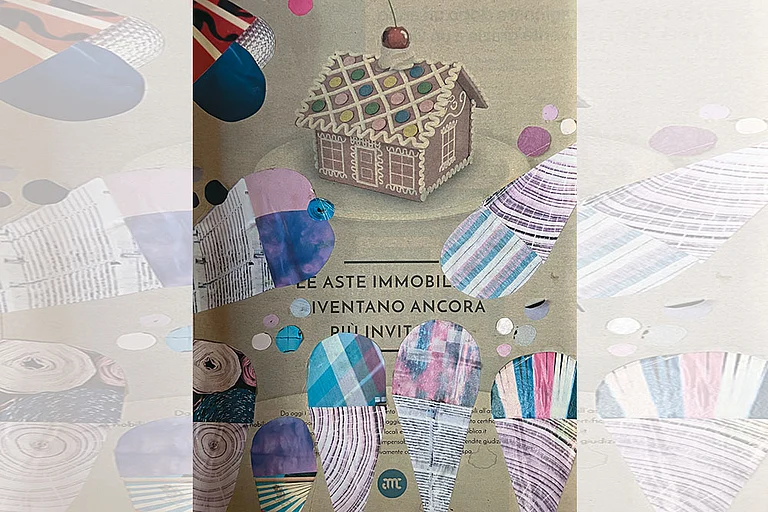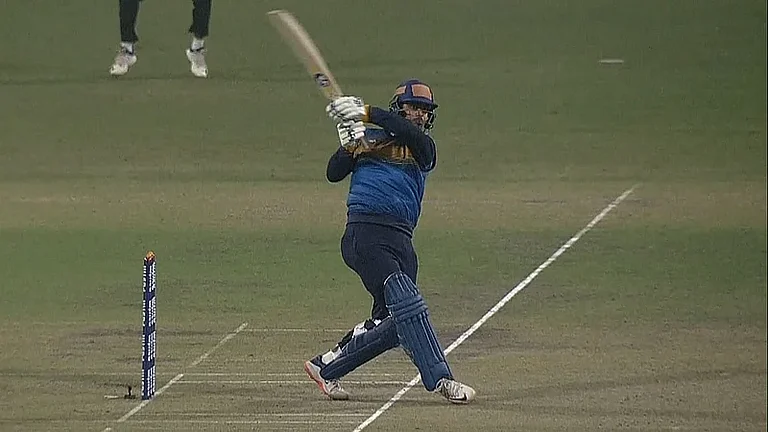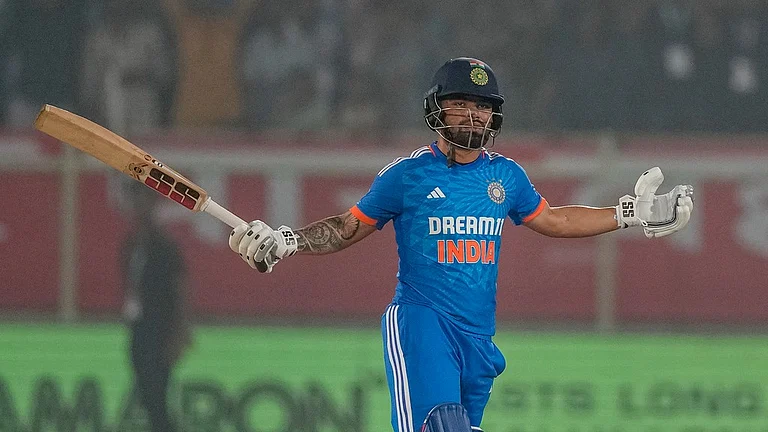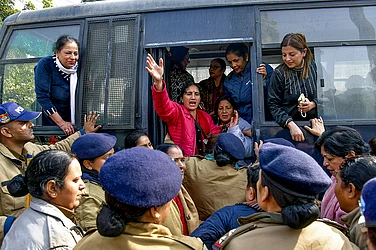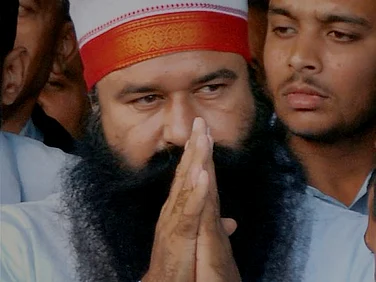It is widely believed that deras are essentially Dalit assemblies and the phenomenon of the dera is centred on the question of Dalit identity. The fact is the dera phenomenon is as complex as any other cultural form in South Asia. If the essence of the idea of India and its sacred geography lies in its diversity and multi-layered cultural nuances and complexities, then Punjab and its deras offer a perfect microcosm. The diversity of these deras makes it difficult to fit them into any rigid, standard definition.
In contemporary times, deras have come to be recognised as spaces of alternative religious imaginations in Northwestern India with an inbuilt propensity to defy the mainstream. Traditionally, they are organised around the concept of a living Guru and governed by moral prescriptions with regard to ethical practices and codes of spiritual living or sadachaar. In Punjab, in particular, where Sikhism has been a dominant religious tradition, the deras and their organisation around a living Guru become problematic since Guru Govind Singh, the tenth Guru, ended the idea of the living Guru and instead, the holy book—Guru Granth Sahib or the Bir was declared the eternal Guru.
The notion of the dera is as ancient as the mainstream formations. Initially, it connoted any place or ashram or abode of a holy person where the followers assembled and attached sacred significance to it. When Guru Nanak’s son Shri Chand Maharaj disagreed with his father, he followed a different path of renunciation and detachment that came to be known as Udasis Deras. During the period of Gurus in Sikhism, many fake claimants under various names who branched off with their characteristic identities emerged and several deras like Minas, Dhirmalias, Masandis, etc. cropped up.
According to a survey done a few years back, there are more than 9,000 Sikh and non-Sikh deras in 12,000 villages of Punjab. Sikh deras follow the Sikh rahit or the code of conduct and non-Sikh Deras do not. Etymologically the words dera, ashram and akhada carry similar connotations, but because of their proximity and popularity in Northwestern India, and especially in Punjab, deras became interlocked with Sikh history and traditions. For instance, even though Namdhari and Nirankaris are Sikh deras, they have strained relationships with the orthodox Sikh-Khalsa tradition because even they tend to organise around the idea of living Guru-like figures.
Caste and Deras
The caste factor added another layer to the already complex dynamics around the idea of deras. Several followers who joined Sikhism in its formative phase were from the landed, agriculturist, middle-caste groups such as Jatts who later emerged as the dominant caste within Sikh society because of their land ownership and resultant socio-economic wherewithal. However, another segment which embraced the new faith founded by Guru Nanak (1469–1539) was from the erstwhile lower castes. They joined the new faith in anticipation of an equal, casteless world. The new faith textually promised an equalitarian social arrangement. But in practice, caste-like formations emerged. Separate gurudwaras, marriage venues and funeral sites for Dalits mushroomed across the villages of Punjab and surrounding areas. The disillusionment of the underclass with the mainstream drove many to the sites of deras organised around a multitude of axes. The urge for autonomy and an independent path set in as the hardworking and numerically powerful Dalit communities, or the Scheduled Castes of Punjab, who are roughly 31 per cent of the population of the State, the maximum in the country, started asserting its rights and mobilising around its own history of intellectual and religious resources. The first formidable milestone was the recognition of the Ad-Dharmi movement of Babu Mangoo Ram as a separate religion in the 1931 census. Babu Mangoo Ram, a former Ghadarite, tried to organise the Dalits of Punjab under the umbrella of Ad-Dharmi, the oldest religion, claiming a separate status of independent religious quam for its people. Even though the movement petered out, it laid a strong foundation of Dalit mobilisation.
Myriad Hues of Deras
Some of the most talked about deras in recent times have been Dera Sacha Sauda of Gurmeet Ram Rahim Singh, Dera Sachkhand Ballan, Dera Noormahal, Dera Bhaniarawale and Dera Radha Soami Satsang Beas. Of these, Dera Sacha Sauda of Ram Rahim who is convicted in rape and murder cases and has been incarcerated at Sunaria jail of Haryana, is the one which has hogged the maximum limelight. This has nothing to do with the Dalits or Dalit identity. It’s the personal fiefdom of Ram Rahim. It has been at loggerheads with the Sikh organisations for a long time, for various reasons including the cases of beadbi (disrespect of the Sikh holy book) and blasphemous impersonation of the tenth Guru. This dera, which borrows its name from the legends related to Guru Nanak, was founded by a Sufi called Baba Beparwah Mastana from Baluchistan who was succeeded by Sant Satnam. Then, in a mysterious way, it was passed on to Gurmeet Ram Rahim Singh, a Jatt Sikh himself. Ram Rahim changed it from a small, non-descript entity to a huge personal fiefdom based at Sirsa, Haryana. He not just added Ram, Rahim and Insan to his name to give a syncretic feel but also sang songs like ‘You Are the Love Charger’ and made and acted in films on himself called MSG or Messenger of God. More crucially, he networked with politicians of all hues and established strong connections. So much so that despite his conviction for heinous offences like rape and murder, he has been getting repeated parole and conducting online-satsangs from his Baghpat-based establishment. Many thought that with his arrest and conviction the Dera Sacha Sauda will close down, but to their surprise, he recently declared himself to be the chief of the dera. He also announced and rechristened Honeypreet, his adopted daughter, as the Ruhani Didi who will look after the dera. A heady mix of pop religiosity and smart political networking thus continues to sustain the manufactured halo around the dera and its Guru.
In contrast, Dera Sachkhand at village Ballan in Jalandhar has been in the forefront of articulating the Ad-Dharmi project of mobilising the Dalits of the region, albeit under the new banner of the Ravidassia movement. The dera is full of posters of Dalit icons such as B R Ambedkar and Jyotirao Phule and their libraries are well-stocked with books and literature on Dalits. The dera came into prominence in 2009 when one of its sants who was visiting Vienna, Austria was shot dead by radical elements. In response, the dera and its strong diaspora network declared a separate path and a new religion called Ravidassia Dharma in 2010 and subsequently a separate book containing exclusive verses of Guru Ravidas, the Bhakti period sant of the 14th century, was inaugurated on Ravidas Jayanti at Seer Govardhanpur, in Varanasi—the birthplace of Guru Ravidas, which over the decades has emerged as the main pilgrimage centre of not just of the Ravidassia of Punjab but also from other Indian states and overseas. However, the movement is currently fraught with concerns and challenges, both internal and external, yet, there is no doubt that it has reinvigorated the dormant Dalit mobilisation and concerns in Punjab.
Dera Bhaniarawale in Ropar, Punjab is a Valmiki dera that burst into prominence a few years back when its Sant Baba Piara Singh Bhaniara faced a murderous attack from Sikh radical organisations. The dera had brought a separate religious book called Bhavsagar Granth and espoused a separatist path based around a new religious code. This invited the radicals’ ire. Dera Noormahal, on the other hand, is in the news because its Sant Ashutosh Maharaj has been kept in the deep freezer after he was declared clinically dead in 2014, as his followers believe that he was in deep meditation or samadhi. Also known as Divya Jyoti Jagriti Sansthan, the dera largely organises around Hindu traditions and codes of conduct. Dera Radha Soami Satsang of Beas in Amritsar, on the other hand, albeit equally rich in history, is a township with an urban, resort-like feel that consciously distanced itself from any overt caste association in its everyday functioning, even though its leadership has been largely dominated by upper-caste Khatris.
Each of these deras has a history of its own which is intertwined with the larger syncretic religious history of the region and its politics. The contradiction in theory and practice of mainstream traditions resulted in a vast swathe of free-floating individuals, groups and communities, especially from the subaltern castes, that in a changed environment want to assert and reclaim their own history, religious icons and sources of knowledge, both political and religious. No wonder the ‘Chamar songs’ of Punjab, sung by Ravidassia singers and popular among the dera followers, are full of references to Babasaheb Ambedkar as their political icon and Ravidas as their religious Guru. In short, deras are quintessentially reflective of porous religious boundaries and fluid faiths of the region that continue to pose challenges to the idea of religion as watertight compartments.
The writer’s monograph on the ‘Deras of Punjab’ will be published by Penguin Random House India in June 2024
(Views expressed are personal)
Santosh K Singh is a sociologist with Dr B R Ambedkar University, Delhi







